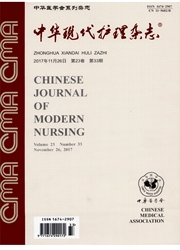

 中文摘要:
中文摘要:
目的:调查和分析齐齐哈尔市老年护理供需情况,并提出解决对策。方法选取齐齐哈尔市4个辖区:建华区、龙沙区、富拉尔基区、昂昂溪区,调查4个辖区老年服务机构的护理供给情况及60岁及以上老年人的护理需求情况。结果齐齐哈尔市老年服务机构相关工作人员的配比情况:床位医护比为1∶0.10,床位护工比为1∶0.14。医护人员学历以大专、本科为主,占83.46%;医护人员职称以初级和中级职称为主,占80.31%;护工学历69.33%为小学,9.20%为文盲,高中及以上学历者仅有1.84%;护工年龄集中在40~59岁;76.69%的护工持有上岗证,22.09%的护工无上岗证。在接受调查的老年人中:男274人,占68.5%,女126人,占31.5%;60~64岁、65~70岁,70~74岁,75~79岁,≥80岁年龄段分别占17.00%,16.00%,18.50%,21.75%,26.75%;已婚、丧偶老年人较多,分别占62.75%,32.75%;照料人为配偶的273人,占68.25%,照料人为子女的101人,占25.25%;老年人所患疾病主要为心血管疾病(58.00%)、脑血管疾病(25.25%)、呼吸系统疾病(21.50%)、糖尿病(19.00%)等。老年人养老意愿以居家养老为主,占90.25%,仅有7.75%、2.00%老年人选择住养老院、护理院。老年人护理需求大,主要是日常陪伴(36.25%)、居家清洁(35.00%)、陪诊就医(29.25%)、清洁衣物(27.50%)、康复护理(16.75%)。结论齐齐哈尔市老年护理问题仍然突出,需继续加大投入,完善老年人护理工作,保障老年人权益,提高老年人生活质量。
 英文摘要:
英文摘要:
Objective To investigate and analyze the supply and demand situation on geriatric nursing in Qiqihar City and put forward countermeasures for solving the problems. Methods We selected four districts in Qiqihar including the Jianhua District, Longsha District, Fularji District and Ang′angxi District. And then, we investigated the situation on supply for nursing of the aged services organizations and the situation on demands for nursing of the people aged 60 years and over. Results The ratio on related personnel in the aged services organizations in Qiqihar City was 0. 10 between the bed and the medical staff and 0. 14 between the bed and nursing assistants. The medical staff mainly graduated from junior college and university, accounting for 83. 46%;the titles of medical staff were mainly primary and intermediate, accounting for 80. 31%. In terms of educational background among nursing assistants, there was 69.33% with primary school, 9.20% with illiteracy, only 1.84 with high school or above;their ages centralized in 40 to 59 years old;there was 76.69% of them with work license and 22. 09% of them without work license. Among the elderly people surveyed, there were 274 (68. 50%) males and 126 (31.50%) females;the proportion of age group of 60-64,65-70,70-74,75-79, over 80 was 17.00%,16. 00%,18.50%,21.75%,26.75%; a total of 62.75% of them were married and 32.75% of them were widowed;there were 273 (68.25%) caregivers belonging to spouses and 101 (25.25%) caregivers belonging to children;disease in the aged mainly included cardiovascular disease ( 58. 00%) , cerebrovascular disease ( 25. 25%) , respiratory disease ( 21. 50%) , diabetes mellitus ( 19. 00%) and so on. The endowment desire focused on home-based care for the aged (90.25%). Only 7.75% of the aged selected to live in rest home and 2.00% in nursing home. The demands for nursing of the aged were large mainly including accompanying them daily ( 36. 25%) , home cleaning ( 35. 00%) , accompanying them to medical at
 同期刊论文项目
同期刊论文项目
 同项目期刊论文
同项目期刊论文
 期刊信息
期刊信息
